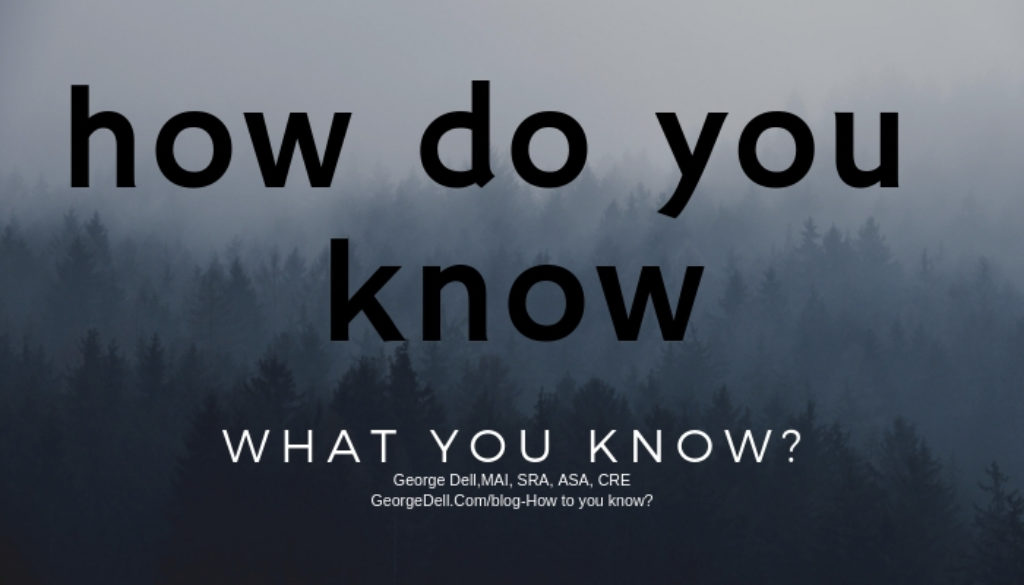We believe we know what we know in four basic ways. Do you know which one is you?
Charles S. Pierce identified four basic ways we come to believe that we know what we know. It is interesting, for my own benefit, to understand how my personal beliefs came to be, and how the general beliefs of our profession have formed.
- The method of tenancy: We get something, from wherever or whoever, and just plain like it. We absorb it, and we tend to not ask questions. Ignoring any challenges, we get defensive about our ‘conclusion.’ This is the simplest method. It’s the easiest way to create a belief, requiring little intelligence.
- The method of authority: Our parents, teachers, and other authority figures simply bequeath their truth to us, and we accept it because we believe in them, justified or not. When coupled to political and economic power, this becomes an effective way to maintain power over others, particularly in dictatorships.
- The a priori method: This method gets one of the above two pushes, but also gives you some choice in say “belief A vs. belief B.” These require some reason, and seem to develop over time.
- The method of method: These beliefs come from objective reasoning and evidence (the empirical method). This way searches for why something may not be true.
The traditional appraisal approach requires delivery of a report which is credible or “worthy of belief.” This worthy scope of work is based on two requirements: 1) that you meet client’s expectations; and, 2) that you do what your peers do. Most of the rest of the requirements are only required “when necessary” for believability.
It appears that appraisal beliefs are based primarily on the method of authority. You may or may not like authority. You may have learned some it from mentors. But mostly you must deliver something others will believe—and provide some reason for them to believe. You should argue (support) your belief of your opinion of the value of a property.
It’s worthwhile thinking about this dual nature of beliefs when it comes to appraisal. The beliefs we are freely given— and the beliefs we must deliver.
On one hand, professional and vocational appraisers must comply with a large set of beliefs, bestowed by our professional organizations, clients, peers, 54 state regulators, several federal agencies, and the “quasi-governmental” agencies, such as the Appraisal Foundation, FannieMae, FreddieMac. This is to not mention the overall destructive “groupthink” which seems to engulf anything around real estate collateral, risk, and the small voice of the individual appraiser. While all claim their purpose is “the public good,” the overall result has proved disastrous. Great recessions and “consumers” without homes.
On the other hand, it’s the appraiser’s job to engender belief on the part of the reader of the appraisal report. So how are we told to do this belief-building? Mostly we are to “support” our opinion.
Form an opinion, then support it. Convince the reader. How do we convince the reader our opinion is “supported?” With facts, logic, metaphors, and stories.
These four basic ways humans can be influenced are in reverse order to the four belief paths. Guess which way psychologists say most easily influences us? . . . stories and metaphors (comparisons). We mentally visualize stories and comparisons. We call them comps.
This conflict, this story—is yet another “dissonance” for the life of an appraiser. We are told to provide research and analysis, but our reviewers like comps and stories. Somehow the process of valuation must integrate the factual logical analytical aspects – with the metaphors and stories that appeal to human readers and decision makers.
